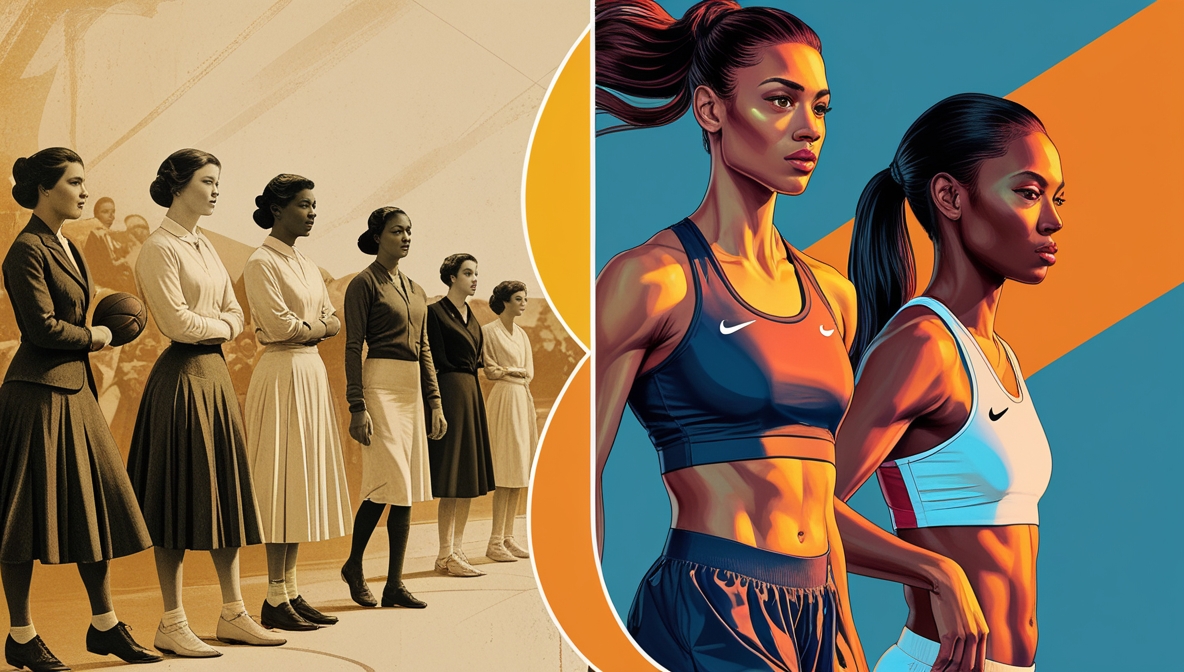The participation of women in athletics has transformed significantly over the centuries. Once restricted by societal norms, women’s involvement in sports now reflects a broader shift toward equality and inclusion. This journey demonstrates resilience, persistence, and the gradual breaking down of barriers that once seemed insurmountable.
Early Barriers and Restricted Roles
In ancient times, women’s involvement in athletics was limited. In Ancient Greece, where the Olympic Games originated, women were largely excluded. Cultural and social expectations dictated that sports were unsuitable for women, focusing instead on domestic roles. Despite this, some women found ways to compete, as seen in the Heraean Games, a separate event dedicated to honoring the goddess Hera.
The Middle Ages brought little progress. Sports participation for women remained minimal, often restricted to noblewomen in activities such as horseback riding, falconry, and archery. These were less competitive and more recreational, reinforcing the perception that sports were primarily a male domain.
The 19th Century: Seeds of Change
The 19th century marked the beginning of organized movements for women’s rights, which extended to sports. The advent of physical education programs in schools introduced young girls to basic athletic activities. Women like Madame Bergman-Österberg in England advocated for gymnastics as a way to promote health and discipline among girls.
Women’s participation expanded into cycling and tennis, thanks to the growing popularity of these sports in the late 1800s. The invention of the bicycle symbolized freedom, and women like Annie Londonderry used it as a tool to challenge societal norms. Tennis became one of the first sports to welcome women at competitive levels, with events like Wimbledon introducing women’s singles in 1884.
Breaking into International Competition
The early 20th century saw women making their mark in international athletics. The 1900 Paris Olympics allowed women to compete for the first time in tennis and golf. Though participation was minimal, it signaled the beginning of broader acceptance.
The foundation of the Women’s World Games in 1922, led by Alice Milliat, provided an international platform exclusively for female athletes. This initiative was a direct response to the exclusion of women from several events in the Olympics. These games were pivotal in demonstrating women’s athletic abilities and challenging perceptions about their physical limitations.
The Mid-20th Century: Breaking Records and Barriers
World War II was a turning point for women’s sports. As men left for the frontlines, women filled roles traditionally reserved for men, including participating in athletic competitions. The post-war era witnessed increased attention to women’s athletics, with icons like Babe Didrikson Zaharias redefining what women could achieve. Zaharias excelled in multiple sports, including track and field, basketball, and golf, inspiring future generations.
The 1960s brought further milestones. Wilma Rudolph, a sprinter from the United States, overcame polio as a child to win three gold medals in the 1960 Rome Olympics. Her achievements shattered stereotypes about women’s athletic potential and inspired others to pursue competitive sports.
Title IX and the Explosion of Opportunities
One of the most significant developments in women’s athletics came with the passage of Title IX in the United States in 1972. This federal law mandated equal opportunities for men and women in educational programs, including athletics. Its impact was transformative, leading to a surge in female participation at both the collegiate and professional levels.
Schools and universities across the United States saw dramatic increases in women’s sports teams and scholarship opportunities. Female athletes like Billie Jean King in tennis and Martina Navratilova used their platforms to advocate for gender equality, both on and off the field.
Professional Leagues and Media Representation
The late 20th century brought professional opportunities for women in sports. The Women’s National Basketball Association (WNBA), founded in 1996, provided a platform for female basketball players to showcase their talents at a professional level. Soccer saw similar strides, with the U.S. Women’s National Team capturing global attention by winning the FIFA Women’s World Cup in 1999.
Media coverage of women’s sports also began to improve, though disparities remained. Iconic moments, such as Brandi Chastain’s celebration after scoring the winning penalty in the 1999 World Cup final, were broadcast worldwide, inspiring countless young girls.
Modern Achievements and Ongoing Challenges
The 21st century has been characterized by growing visibility and success for women in athletics. Events like the Olympics now feature near-equal representation in terms of gender participation. Athletes like Serena Williams, Simone Biles, and Megan Rapinoe have become global icons, excelling in their sports while advocating for social and gender equality.
Despite these advancements, challenges persist. Pay disparities between male and female athletes remain a significant issue, as do unequal sponsorship opportunities. Media representation, while improved, still favors men’s sports in terms of coverage and funding.
Key Milestones in Women’s Athletics
- 1900: Women participate in the Olympics for the first time.
- 1922: Inauguration of the Women’s World Games.
- 1960: Wilma Rudolph wins three gold medals at the Rome Olympics.
- 1972: Title IX is passed, revolutionizing women’s sports in the U.S.
- 1996: The WNBA is established.
- 1999: U.S. Women’s Soccer Team wins the FIFA World Cup.
The Future of Women in Sports
The future holds promise for women’s participation in athletics. Global movements advocating for equality, increased investment in women’s leagues, and a focus on grassroots development are paving the way for further progress. As more young girls are encouraged to participate in sports, the next generation of female athletes will continue to break records, inspire others, and redefine the possibilities of human achievement.
